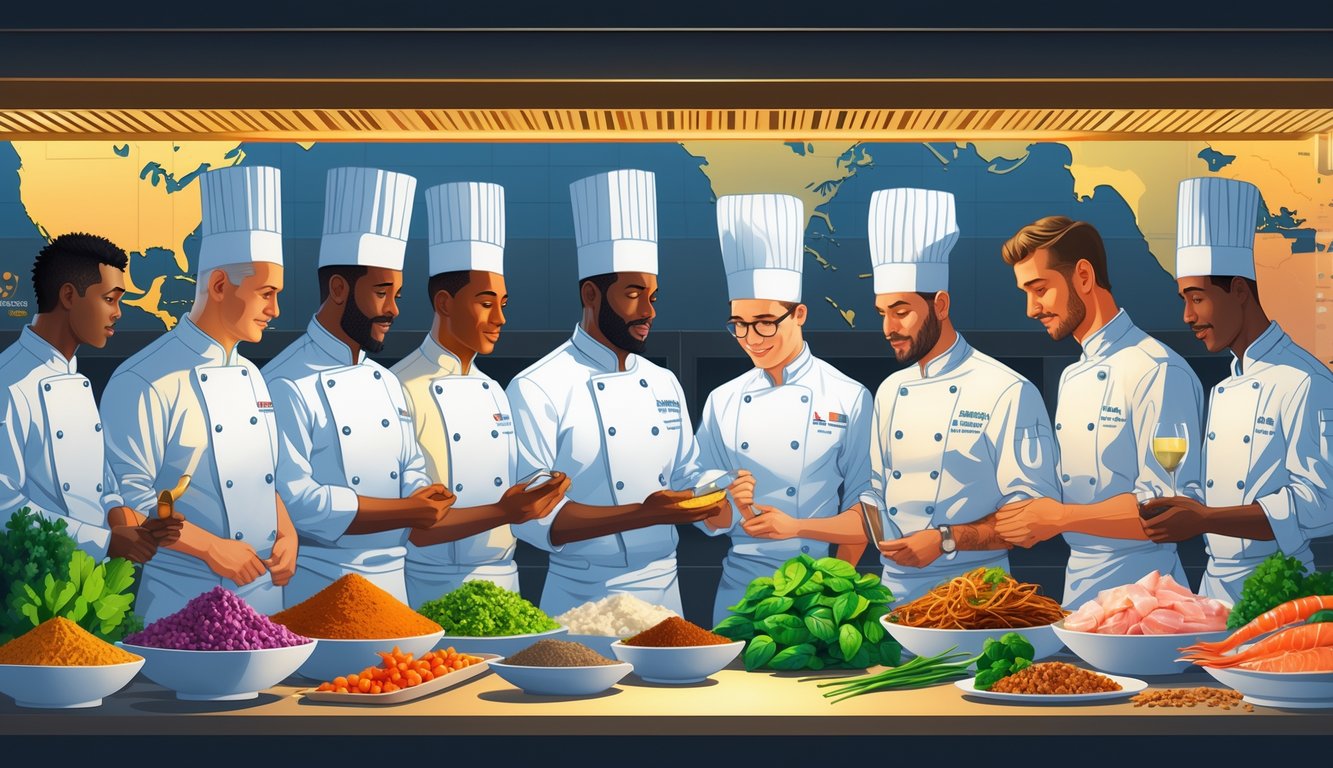
Use of Historical Data and Technology
ERP what? Most people tune out the second a supplier brings up their fancy tracking software, but I’m the one hunched over ingredient traceability reports at 2am, basically living for that stuff. Historical data used to be, like, a sticky notebook or someone’s grandma’s “secret” method. Now? Big restaurants are pulling numbers from their POS systems, matching up ingredient usage spikes with supplier fill rates, and suddenly a menu change in March isn’t just a vibe—it’s a desperate attempt to not lose your shirt on margins. Is it overkill? Maybe. But here I am, spreadsheet open, pretending I’ve got it all figured out.
Here’s the kicker: I spent four years logging every ambient temperature in the bakery lab, tried to model sourdough consistency, and then—wait for it—someone changed the cleaning schedule and trashed the whole dataset. Classic. Meanwhile, the industry’s all about AI-driven ingredient discovery (2025 buzzwords: precision fermentation, regenerative ag, ML pattern recognition), and plant proteins are flipping farm contracts in real time. But guess what? Suppliers still fax me PDFs at 3am, handwritten numbers and all. Data tools are supposed to speed up shelf-life testing and allergen tracking—one chef even claimed “blockchain labeling saved my career” (I mean, did it though?)—but try getting a truffle hunter in France to care about blockchain. Good luck.
Tech’s everywhere, but the chaos? Oh, it’s not leaving. And honestly, neither am I.
Ethical and Sustainable Sourcing Practices
Nobody ever tells you how much of this is just sweaty, mind-numbing admin—sustainable sourcing is mostly phone tag, certifications that make no sense, and comparing crop yields instead of, you know, flavor. It’s not some “save the world” moment. It’s compliance, traceability logs, and menus that change because the supply chain is a mess. Pretty stories? Not here. Loopholes, supplier swaps, and last-minute panic calls—way more common than anyone admits.
Integrating Sustainability and Ethical Practices
A supplier once said, “Rainforest Alliance certification basically stops at the warehouse door.” So, yeah, I end up driving out to check labor conditions myself. Any chef who claims they know exactly where every tomato comes from is either psychic or lying. Swap out cheap shrimp for wild-caught Gulf? Suddenly I’m getting EPA warnings and the kitchen’s mad about extra prep. Sustainability isn’t some shiny badge; it’s a mess of trade-offs: seasons, food miles, quotas. My spreadsheet tracking farm certifications and carbon emissions? Hideous and never up to date. But honestly, most “sustainable” stuff is just about not getting dinged in a BRCGS audit. Costs go up, vendors fudge numbers, and “initiatives” are usually about not losing contracts. If you’re not constantly testing new suppliers, those sustainability claims get stale before the next health inspector even shows up.
Supporting Sustainable Sourcing and Local Economies
Market day: not cute, not a stroll. I remember a chef losing it because the lettuce was “too wet” and ruined a plate. Local economies? They control my budget more than recipes ever do. PR talks up “buying local,” but in reality, it’s frantic texts to three farms and haggling over egg prices. Nobody posts that on Instagram.
Supporting regional suppliers means taking the hit when their crop fails. Drought year? Prices triple, partnerships get weird, and my menu’s stuck with whatever survived. Can’t swap out the fancy chevre or people notice. Pro tip: have backup suppliers for every main ingredient—saves more money than any food waste plan ever will. It’s not romantic; it’s survival. And weirdly, if you overpay for ugly produce, those farmers remember and magically “find” the last case of tomatoes when you’re desperate.
Sourcing for Specific Culinary Needs
Stock lists, supplier drama, and the kitchen’s obsession with some cheese nobody’s heard of—my brain’s fried. Try locking down consistent quality and suddenly your best guy blames “the weather” for missing half your order. Normal, apparently.
Selecting Quality Meats, Seafood, and Dairy
I’ve had more pointless conversations with butchers about marbling than I care to admit. One chef told me 80% of grade labels are basically fiction unless you see the cut yourself. If I don’t touch the fat cap, I’ll second-guess it all night. Pasture-raised ribeye from Iowa? Sometimes legendary, sometimes not even close.
Seafood? Wild-caught is the dream, but traceability is a joke. I spend half my time decoding vague catch locations. Chef Melendez swore by QR codes until he got a crate labeled “snapper” that, uh, wasn’t snapper. Dairy’s my hill to die on: skip commodity, go local, and if the creamery can’t name the cow breed, I’m out. Getting milk that holds under heat? More complicated than fixing my car. And if you ever have to explain to a line cook why the buttermilk’s “off” on delivery day, I feel your pain.
Working With National Distributors for Consistent Supply
Supposedly, national distributors like Sysco or US Foods fix everything—“consistent” supply, certifications, the works. But every chef knows the first thing to disappear is chicken thighs, then whatever berry you need for tomorrow. Great, you get HACCP, vendor portals, “robust traceability,” but half your avocados vanish at customs.
Reps call every Tuesday, dropping spec sheets like that’ll solve product quality. Remember last year’s “organic” eggs debacle? FDA said it was the most expensive hard-boiled mix-up ever. I keep my own spreadsheet of their shortfalls because, honestly, promises mean nothing. Always ask for lot numbers and origin docs or you’ll get cheese that tastes like cardboard half the time. My workaround? Rotating secondary suppliers—painful, but better than nothing. Still, I never get surprise truffles, no matter how many times I write “urgent truffles” on the order.



